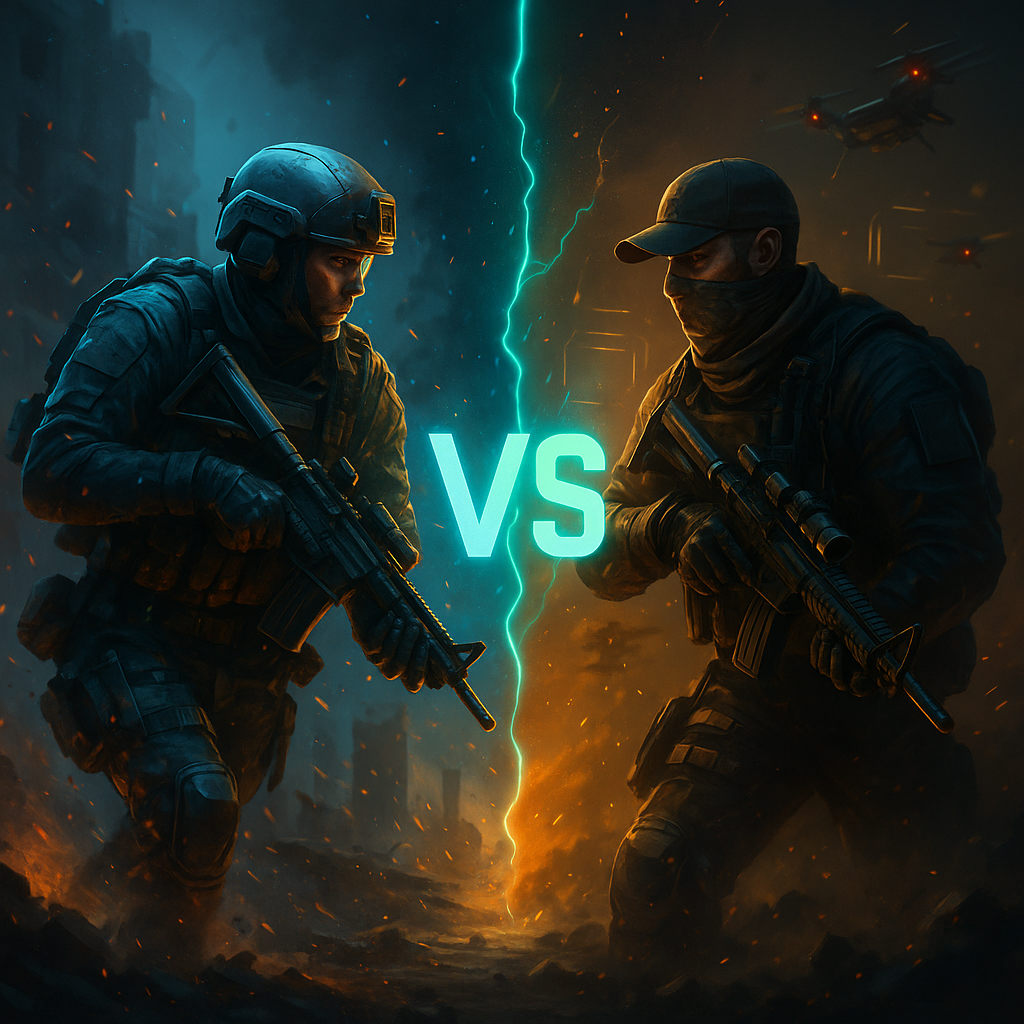In the high-stakes world of first-person shooters, the stage is set for a heavyweight clash: Battlefield 6 vs Call of Duty.
After a rocky launch with Battlefield 2042, EA and DICE are returning with renewed focus, not just on gameplay, but on the infrastructure, monetization, and ecosystem needed to challenge Call of Duty’s dominance. With Battlefield 6 slotted for release this week and development, this isn’t just another sequel — it’s EA’s attempt to redefine its FPS identity.
Meanwhile, Call of Duty continues to expand its lead, with multi-platform launches, streaming integrations, and seasonal monetization driving revenue across casual and competitive audiences.
So how is EA approaching this next phase of Battlefield, and what could it mean for the future of the genre?
Let’s break it down.
Multiplayer: Battlefield Goes Modular
One of the biggest changes coming to Battlefield 6 is a shift toward modular multiplayer design. Rather than locking players into strict conquest or rush modes, EA is exploring a layered system where:
● Dynamic objectives shift based on match progress
● Maps are altered in real time to reflect destruction and player choices
● PvP and PvE modes are available in the same client, rather than as separate products
This positions Battlefield as a sandbox FPS, leaning into its core strength: scale, destruction, and emergent combat. It’s a contrast to Call of Duty’s tighter, faster multiplayer meta, which favors refined control over chaos.
Monetization: Lessons from Missteps
EA has confirmed that Battlefield 6 will not follow the 2042 live-service playbook. While seasonal content and battle passes will still exist, monetization will pivot toward player agency and cosmetic transparency.
Key changes expected:
● No paid power advantages
● Clear cosmetic tiers with preview tools
● Premium-only seasons replaced by rotating free/paid hybrid events
The move reflects a broader shift in the industry, where players are willing to spend, but only if the rewards feel fair, visible, and optional.
Call of Duty’s monetization success (from bundles to crossover skins) is hard to match, but EA’s new approach may win back core players skeptical of paywalled experiences.
Backend Infrastructure: A Focus on Stability and Scale
DICE has invested heavily in dedicated server architecture for Battlefield 6, after community frustration with latency and match instability in past releases.
Reported upgrades include:
● Auto-scaling server clusters for high-traffic windows
● Improved netcode to reduce desync in large-scale battles
● Integrated anti-cheat at the server layer, not just client side
This backend investment is key to reclaiming Battlefield’s identity as the go-to game for massive, 128-player warfare, especially as Call of Duty has fine-tuned its matchmaking and cross-platform lobbies.
Community Tools and UGC: A New Differentiator?
EA is also reportedly exploring a Battlefield Creator Platform — a toolkit for players to design, share, and monetize custom maps or modes.
This would align Battlefield with community-driven platforms like Halo Forge or Roblox Studio, and offer a stark contrast to Call of Duty’s closed ecosystem.
If executed well, it could turn Battlefield into a platform, not just a product — one where fan-made modes, maps, and scenarios help extend shelf life and reduce franchise fatigue.
Kodex’s Take: Why This Battle Matters
For players, this showdown means more choices, sharper features, and smarter monetization across the FPS genre.
Kodex will be tracking both games closely in our AI-powered discovery engine, highlighting not only core features and trailers, but:
● Community-created Battlefield maps
● Call of Duty seasonal content updates
● Cross-platform performance comparisons
● Mode-based recommendations (solo, co-op, competitive)
As each franchise carves its path, you’ll be able to find the experience that fits your playstyle, mood, and platform — all in one place.


